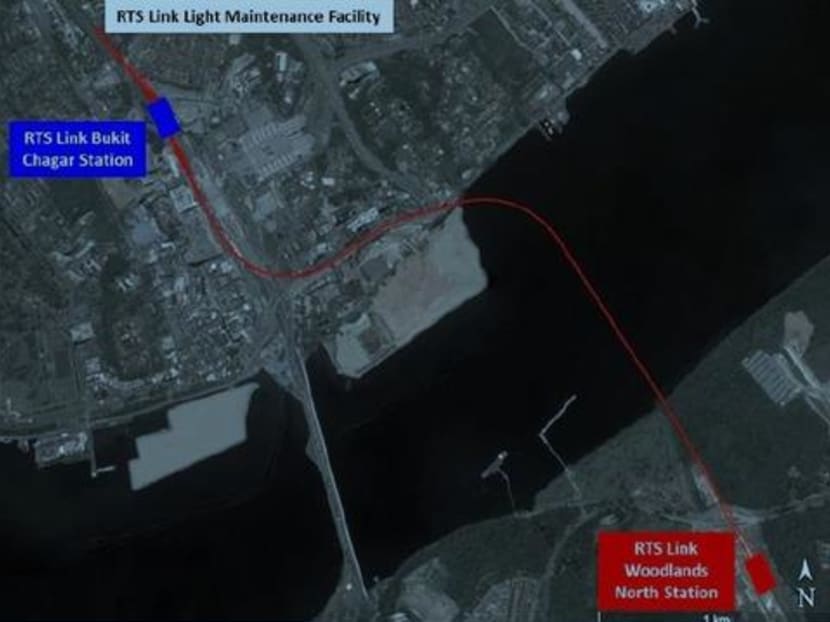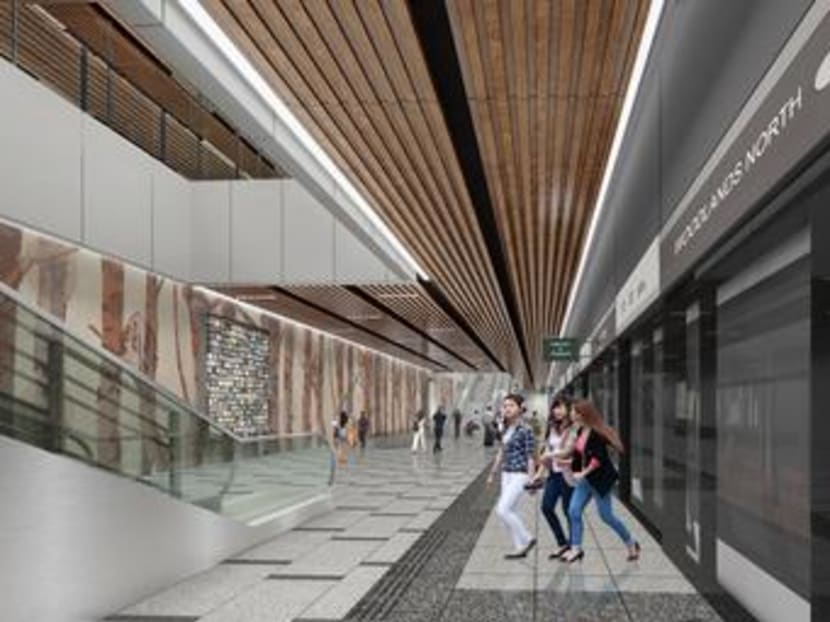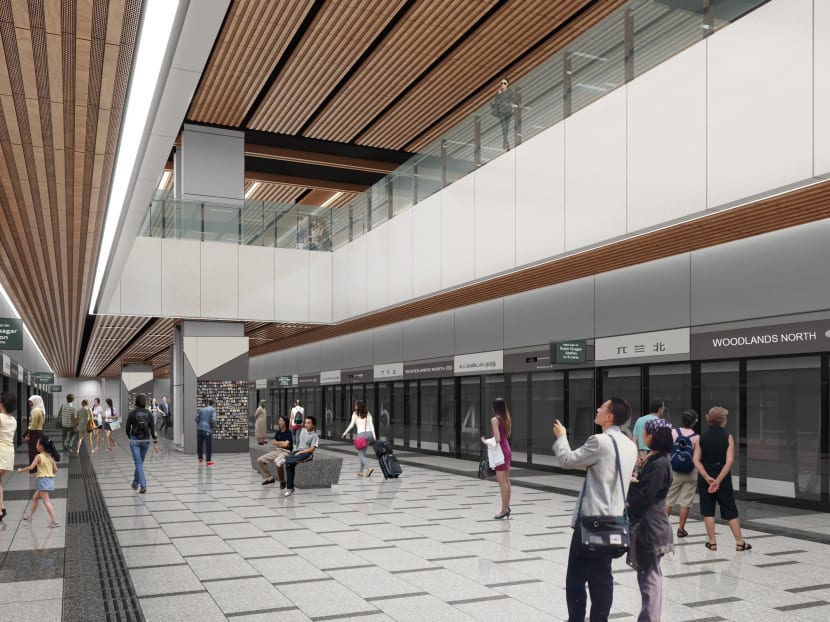S’pore, M’sia settle on alignment for Woodlands-JB rail link
SINGAPORE — The tracks of the Singapore-Johor Rapid Transit System (RTS) will bend over Johor, rather than over water as was the initial design, after taking into account the Johor Sultan’s earlier reservations over the project.
SINGAPORE — The tracks of the Singapore-Johor Rapid Transit System (RTS) will bend over Johor, rather than over water as was the initial design, after taking into account the Johor Sultan’s earlier reservations over the project.
The new alignment — which features a bridge crossing the Johor Straits in a largely straight line — will make no difference to Singapore in terms of cost or operations, and joint engineering studies have deemed it feasible, TODAY understands.
On Tuesday (Jan 16), the two countries inked a bilateral agreement for the rail link at the Istana, witnessed by Prime Minister Lee Hsien Loong and his Malaysian counterpart Najib Razak. Mr Najib is in Singapore to attend the eighth Singapore-Malaysia Leaders’ Retreat.
Details of the alignment were part of the pact — signed by Singapore’s Transport Minister Khaw Boon Wan and Mr Abdul Rahman Dahlan, Malaysia’s Minister in the Prime Minister’s Department — which sets out the key points of agreement between the two sides, including the technical, safety and security requirements, and customs, immigration and quarantine arrangements for the project.
In August last year, Johor Sultan Ibrahim Iskandar voiced disagreement with the overall curve-shaped design of the tracks as well as the plan to build a bridge — linking Woodlands and Johor Baru — as high as 30m above water in the middle section.
Read also
- In full: Joint statement by PM Lee and PM Najib following annual leaders' retreat
- Hydrometric modelling study in the works to raise yield of Johor River: PM Lee, Najib
He felt it would disrupt the Malaysian city’s skyline and slammed the proposed curved design and elevated bridge as impractical, unsustainable and potentially costly, the Malaysian press reported in August. The Johor ruler later agreed to the revised design.

The RTS Link will cross the Straits of Johor via a 25m-high bridge, linking the Bukit Chagar Station in Johor Bahru to the RTS Link Woodlands North Station in Singapore. Photo: LTA
Construction of the rail link is expected to begin after tenders are awarded by early next year at the latest. Passenger service is due to begin by December 2024.
For a start, the service will run between the two cities with up to three trains and two spare ones, with capacity totalling 5,000 people per hour in each direction.
At its peak, the rail link can ferry up to 10,000 commuters in each direction hourly. This means an extra capacity of 60,000 people during peak periods, Singapore’s Land Transport Authority (LTA) and Malaysia’s Land Public Transport Commission (Spad) said in a statement on Tuesday.
In comparison, the KTM Tebrau train service shuttles just 300 passengers per hour in each direction on average presently, the two agencies said. The KTM service will be discontinued six months after the RTS becomes operational.
For a start, trains on the RTS will run at intervals of eight minutes on average. Depending on ridership, this could be halved to four minutes eventually.
The rail link, announced by the Malaysian and Singapore governments in 2010, will ease congestion and provide a much-needed alternative for the tens of thousands of people who journey across the Causeway daily.
It will connect Woodlands North in Singapore and Bukit Chagar in Johor via a 25m-high bridge over the Johor Straits.
To ease traveller flow, customs, immigration and quarantine facilities from the two countries will be located at both Woodlands North and Bukit Chagar.
This means travellers going in either direction will clear the immigration authorities from both sides when departing, and need not do so on arrival.
The RTS operator will be a joint venture between Singapore rail company SMRT and Malaysia’s metro operator Prasarana Malaysia.
It will set the fares, which will not be regulated by the two governments, the LTA and Spad said. In turn, the operator will pay the two countries a concession fee in exchange for the right to earn fare revenue.
The operator will run the rail service for the first 30 years and determine the RTS’ operation hours.

An artist's impression of the train platforms at the RTS Link Woodlands North Station. Photo: LTA
SMRT and Prasarana have until June 30 to incorporate the joint-venture company. A concession agreement will then be signed by Sept 30 between the joint-venture firm, and the Singapore and Malaysian authorities.
After the first 30-year concession period, the operator will be determined via an open tender.
Singapore and Malaysia will also each appoint an infrastructure company to fund, build, own, maintain and renew the civil infrastructure and stations in their own countries. For Singapore, it is the LTA, while Malaysia has picked Prasarana.
The RTS’ Woodlands North Station will be linked to Singapore’s upcoming Thomson-East Coast MRT Line (TEL) via a basement level.
“For economies of scale, the RTS link will utilise the same four core systems — trains, signalling system, communications system and integrated supervisory control system — as Singapore’s upcoming Thomson-East Coast Line,” the LTA and Spad said.
Heavy maintenance for the RTS will be done at the TEL’s Mandai Depot and outsourced to SMRT Trains, the operator of the TEL. As for light maintenance work, a facility will be set up at Bukit Chagar.









